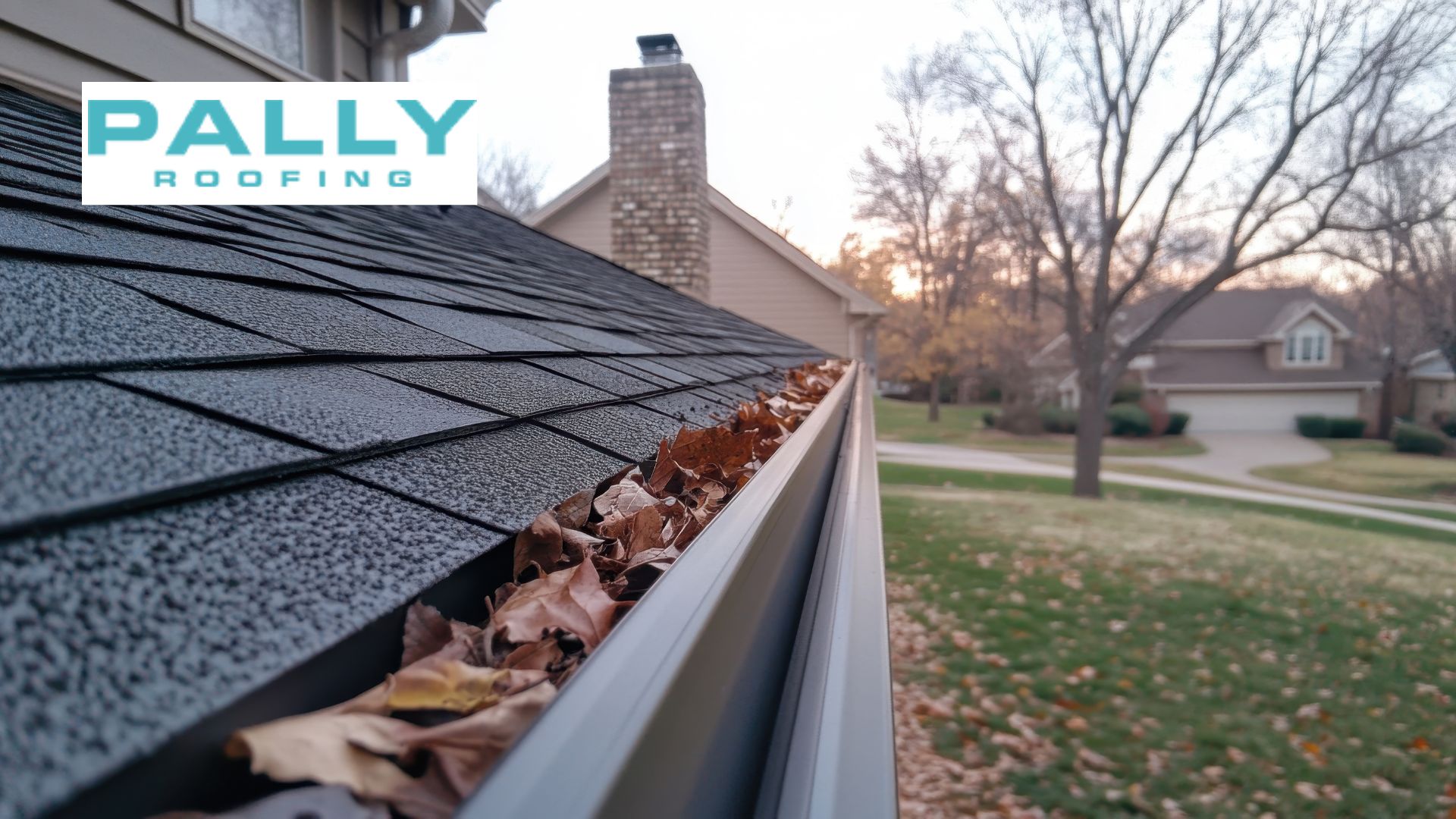Last updated on December 30th, 2024 at 03:47 pm
Effective snow management for metal roofs is essential in areas with harsh winter conditions to ensure safety and protect the integrity of roofing materials. Snow and ice buildup can cause hazards such as snow drifts, hail storms, and potential damage to the roof itself.
Table of Contents
This article examines the leading systems for managing snow on metal roofs: metal roof snow guards and rails. Discover the best types of metal roofs for durability, style, and long-lasting protection for your home.
What Are Metal Roof Snow Guards?

Snow guards prevent snow and ice from forming on metal roofs. They help keep the ice in place and slowly melt it.
Function
Snow guards hold snow and ice particles, making it easier to melt slowly rather than letting a large amount fall at one time. This method is particularly effective in preventing ice and minimizing roof damage.
Materials and Design Options

Source: Snoblox
Metal roof snow protection comes in materials like steel and aluminum, with different installations:
- Clamp-on Snow Guards: Attach without penetrating the roof.
- Screw-on Snow Guards: Secure with screws for an even stronger grip.
- Glue-on Snow Guards: Use an adhesive for easy installation suitable for specific roof types.
Each option offers aesthetic and installation benefits to suit specific needs.
When to Use
Snow guards are handy for steep roofs where snow and ice accumulation can be hazardous. They are ideal in areas where controlled snowfall is needed, such as areas with strong winter winds. Installing snow fencing in these areas helps ensure safety and protects your roof from potential damage.
What Are Metal Roof Snow Rails?

Source: Amazon
A snow rail is a series of tall vertical poles fixed to the roof. The roof is snow-covered in a controlled manner, helping to prevent uncontrolled avalanches.
Function
Unlike snow guards, which retain snow, snow rails allow a path through the roof to remove the snow slowly. This system reduces the risk of sudden avalanches and controls snow flow from the roof.
Materials and Design Options

Source: Big Commerce.
Metal roof snow rails are commonly made from durable materials like steel and aluminum. They come in various profiles, including:
- Round Rails: For a sleek look and good snow handling.
- Square Rails: Adds a great look and can provide additional structural support.
These systems allow homeowners to choose based on functional and aesthetic preferences to complement their roof style.
When to Use
Ice rails are ideal for roofs with heavy snow or emergency ice removal. They are the best:
- Steep roofs: Where the risk of hail is high.
- Areas with excessive snowfall: For protection against heavy snow accumulation.
Installing snow rails ensures better safety and minimizes damage from falling snow and ice.
Key Differences: Snow Guards vs. Snow Rails
Factors to Consider When Choosing Between Snow Guards and Snow Rails
- Roof Slope and Shape: Steeper roofs may benefit from snow guards; flatter roofs may require snow rails for roofs for better snow shedding.
- Snowfall Volume: Heavy snowfall areas generally require snow rails for effective breakage.
- Aesthetic Preferences: Choose snow guards for a discreet solution; choose snow rails if visibility is not an issue.
- Budget: When deciding, consider all costs, including installation and materials. The cost of installing snow guards vs. snow rails may vary depending on roof size and snow load.
Maintenance Requirements
- Snow Guards: Check regularly for ice blockage or buildup; clean up after a storm.
- Snow Rails: Frequently inspected for corrosion or wear or search for damage after a heavy snowfall.
Cost Considerations
- Snow Guards Costs: Varies by material; Usually cost-effective but may require multiple units to achieve adequate coverage.
- Snow rail initially costs more, but it is suitable for continuous expanses of space. Height and physical features are also affected.
The Most Common Materials Used for Snow Guards and Snow Rails

Source: iibec
Here is an overview of the most common materials used for snow guards and snow rails:
Metal Snow Guards
1. Stainless Steel:
-
- Strength & Durability: Known for strength and corrosion resistance, it is ideal for harsh weather conditions.
- Applications: Commonly used in snowy areas due to its ability to withstand heavy loads.
- Benefits: Long-lasting and highly resistant to rust.
2. Aluminum:
-
- Lightweight & Cost-Effective: Rust-resistant and offers a balance of durability and affordability.
- Applications: Suitable for various roof types, providing a flexible and economical option.
- Benefits: Easy to handle and install.
3. Copper:
-
- Aesthetic Appeal: Copper has a long-lasting patina, making it attractive to those who want a unique aesthetic.
- Applications: Typically used with copper roofing systems for a simple design.
- Benefits: Highly durable and corrosion-resistant.
4. Polycarbonate:
-
- Durability & Transparency: It is a cost-effective plastic choice, and its transparency makes it blend well with the roof,
- Applications: Typically used in light snow areas where high power is not a factor.
- Benefits: Less expensive than steel, but still effective for storing snow.
Snow Rails
1. Steel:
-
- Strength & Durability: Provides excellent strength, making it ideal for heavily snowy areas.
- Applications: Typically used for areas of heavy snow accumulation.
- Benefits: Highly durable, capable of withstanding extreme weather conditions.
2. Aluminum:
-
- Lightweight & Rust-Resistant: Practical choice for snow rails, providing strength and lightweight structure.
- Applications: Suitable for heavily snowy areas.
- Benefits: It provides a cheap but effective solution.
3. Stainless Steel:
-
- Corrosion Resistance & Durability: Like protective ice, stainless steel is preferred for its high resistance to rust and corrosion.
- Applications: Often chosen for areas with severe winter conditions.
- Benefits: Long-lasting, with minimal maintenance required.
Factors to Consider
- Roof Type: The material chosen should match the type of roof (metal, tile, etc.).
- Weather Conditions: The severity of winter and snow accumulation will determine the best choices for long-term operation.
- Aesthetic Preferences: If the visual aspect is a concern, materials such as copper or polycarbonate may be desired to blend into the roof structure
When selecting materials for snow management systems, consider local weather conditions, anticipated snow accumulation, and roof aesthetics to ensure optimal performance and compatibility.
How Do Stainless Steel Snow Guards Handle Extreme Weather Conditions?
Due to their strength, durability, and corrosion resistance, stainless steel snow guards perform well in harsh weather conditions. Here’s how they fare in severe weather.
- Anti-icing properties: Stainless steel is naturally resistant to rust and corrosion, making it ideal for areas with high snow, ice, or humidity. These properties ensure that snow protection works well over time, even in areas that experience frequent snow, ice, and rain.
- Strength and Durability: Stainless steel is a strong material that can withstand the weight of accumulated snow and ice. It can handle the stress of heavy snow without breaking or breaking, keeping the snow guards up and running smoothly.
- Withstands Freezing Temperatures: Stainless steel can withstand very low temperatures without brittleness. This makes it suitable for harsh winter conditions where other materials may crack or lose their integrity due to freezing temperatures.
- Resistance to UV Damage: Unlike some materials, which can be damaged or shattered due to prolonged exposure to sunlight, stainless steel retains its strength and look over time. This is especially important for snowy and cold environments with frequent cycles without material deterioration due to extreme cold and heat that can sometimes be managed.
- Low Maintenance: Stainless steel requires little maintenance, even in harsh weather conditions. Although periodic snow or ice inspections are recommended, stainless steel snow guards remain in service without regular maintenance or replacement.
In conclusion, stainless steel snow guards perform excellently in extreme weather conditions, making them reliable for areas with high snow frequency, snow temperature, humidity, and excellent cooling. Their durability and low maintenance needs ensure long-lasting protection for metal roofs.
Conclusion
Effective snow management solutions for metal roofs in heavy snow areas are critical for safety during the winter months. Ice protection and rails provide unique benefits designed for roofing needs.
Consider consulting professionals like Pally Roofing, who specialize in these systems and have extensive experience in harsh winter conditions in Garrettsville and nearby areas of Ohio. When deciding between a snow guard and a snow rail, assessing your roof’s snow load, aesthetic preferences, and budget is important.
Frequently Asked Questions!
Should I Put Snow Rails On My Metal Roof?
Roof rails are a great snow management option. They allow snow to be safely and slowly removed, preventing dangerous storms, especially on large structures or sloping areas.
What Are The Disadvantages Of Snow Guards?
While snow guards for standing seam metal roofs are effective at preventing snow buildup, they can be expensive to install, especially for large roof spaces. Maintenance is also necessary for proper functioning and can change the beauty of your roof.
Do Snow Guards Cause Ice Dams?
No, roofing snow guards do not cause ice dams. Instead, they help prevent it by slowing the ice buildup and gradually warming it, reducing the risk of water buildup leading to ice dams.
How Much Does Snow Guard Installation Cost?
The cost of installing clamp-on snow guards for metal roofs varies depending on the size, materials, and complexity. The roof installation costs range from $500 to $2,500. Professional installation is recommended for optimal placement.
What Should Be Put On A Metal Roof So Snow Will Slide Off?
Snow rails for roofs are the ideal choice to ensure safe snow shedding. These horizontal bars facilitate controlled snow sliding, helping to prevent snow avalanches and roof damage by maintaining a manageable snow flow.
How Much Snow Is Too Much For A Metal Roof?
Metal roofs can withstand heavy snow loads. However, accumulating more than 40 pounds of snow per square foot can cause system stress. Therefore, it is important to check snow accumulation in areas with snow and ice protection, especially on steel roofs, and remove excess snow if necessary.
When Should You Not Use A Metal Roof?
While metal roofs are strong, they may not be the best choice in high humidity or coastal areas with high salt content, even with snow guards standing seam.
Where Should Snow Guards Be Placed On A Metal Roof?
Snow and ice guards for metal roofs should be installed near the eaves and ridges, with placement depending on the roof’s slope and snow load. Snow pads are the best solution for standing seam metal roofs to protect snowflakes, allowing for slow melting.
Author
-

With more than 16 years of hands-on experience, Phillip Schmucker is the knowledgeable owner of Pally Roofing. His dedication to superior roofing services has earned him a reputable place in the industry. Phillip also shares his extensive expertise through writing, providing readers with practical tips and professional advice on various roofing topics. Follow him on LinkedIn.
View all posts






